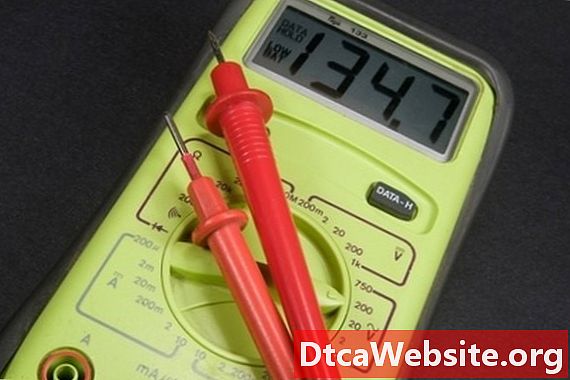
Contenu
The 2010 Honda Civic came standard with a 1.8-liter four-cylinder engine that produced 140 horsepower. Also standard on the 2010 Civic, like all 2008 and later passenger vehicles, is a tire pressure monitoring system that constantly reads the tire pressure and triggers a light on the instrument cluster when a tire falls below its specified pressure. To reset this light, you need to check the tire pressure and adjust any underinflated tires to their specified pressure.
Determining the Correct Tire Pressure
Check the sidewall of the tire for the raised lettering that indicates the tire size, it is formatted as such: XXX/XXRXX, with the "X" being numbers. If your Civic has 195/65R15 tires, the correct air pressure is 30 psi; if your civic has 205/55R16 tires, the correct tire pressure is 32 psi; and if your Civic has 215/45R17 tires, the correct tire pressure is 33 psi.
Checking the Tire Pressure
Allow the vehicle to sit until the tires are cool to the touch, as the Civics tire pressure guidelines are for when the tires are cold - road travel causes the pressure to increase. Unscrew the cap from one of the tire valve stems -- the rubber valve in the rim. Press the end of the tire pressure gauge onto the brass tip of the valve stem firmly and hold it in place until the gauge displays the pressure, remove the gauge and check the pressure a second time for accuracy. Notate the pressure and screw the valve stem cap back onto the valve stem. Repeat this process on all four tires. Check the pressures you notated and compare them to the specified pressures for your Civic. Any tires that are below that specification may be causing the low-tire-pressure light.
Adjusting the Tire Pressure
Park the vehicle next to a compressed air source with a tire-inflation chuck and unscrew the valve cap from the tires that you determined were low on pressure. Press the tire-inflation chuck firmly onto the valve stem on one of the low tires to start the flow of air. Stop the flow of air about every five seconds and recheck the air pressure in the tire. Move to the next low tire once the tire has reached its specified pressure. Repeat this process on all of the tires with low pressure, then screw the valve stem caps back on all of the valve stems. The low tire pressure light will turn off once you start driving.


